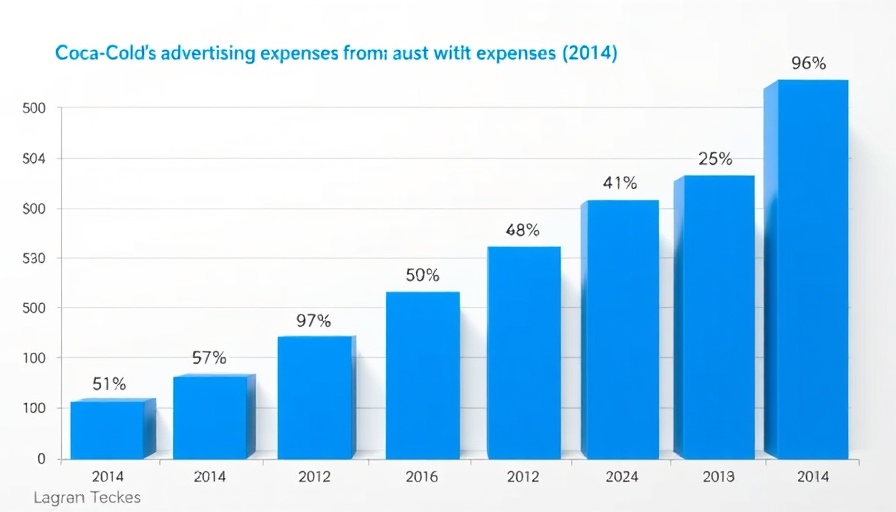
Understanding Coca-Cola's Advertising Spend: A Comprehensive Overview
Coca-Cola Co. has long been regarded as a titan in the beverage industry, not only for its diverse product offerings but also for its robust advertising strategies. With anticipated spending surpassing $5 billion in 2024, this iconic company continues to assert its dominance in the global market, representing a notable increase from its average annual expenditure of around $4 billion over the past decade. The stark drop to $2.8 billion in 2020 due to the pandemic underscores the impact of external factors on advertising budgets.
Advertising Trends from 2014 to 2024
The trajectory of Coca-Cola's advertising expenses demonstrates an upward trend that aligns with the company’s strategy to bolster its market presence. As Coca-Cola ramps up expenditures, marketing practitioners can glean insights into how such financial investments translate to brand performance. With the U.S. contributing over 20% of the total advertising budget, which equates to $646 million in 2022, it’s evident that regional markets play a significant role in shaping global advertising strategies.
Innovative Advertising Practices that Shape Success
Coca-Cola’s advertising narrative has always been driven by both tradition and innovation. Notably, in 2022, the brand allocated $327 million to promote its flagship Coke, standing out as the most advertised non-alcoholic beverage in America. The historical reliance on captivating visuals, from Norman Rockwell's art to the beloved holiday polar bears, showcases how creativity and nostalgia are powerful tools in attracting consumer interest. Small businesses observing Coca-Cola's strategies might consider how innovative advertising, whether through nostalgia or modern relatability, can forge deeper connections with their audiences.
Digital Dominance: Leveraging Social Media
In today’s digital age, traditional advertising needs to blend with social media engagement to cultivate a robust consumer base. Coca-Cola remains a force on platforms such as Facebook, where it ranked fifth with nearly 107 million fans in September 2023. Moreover, the company's YouTube channel has attracted about 3.28 billion views, indicating not just an active presence but a strategy that utilizes diverse media effectively. Small businesses can learn from this by recognizing the importance of a multifaceted approach to brand engagement online.
Lessons for Small Businesses: What You Can Implement
As Coca-Cola exemplifies, effective advertising is less about budget size and more about smart allocation and strategy. Here are key takeaways for small businesses:
- Understand Your Audience: Tailor campaigns that resonate with your audience through the medium they most engage with.
- Investment in Quality Content: Prioritize creating high-quality, engaging, and innovative content that can be shared across various platforms.
- Integrate Digital Marketing: Utilize social channels not just for promotion but for community engagement and feedback.
By adopting elements demonstrated by Coca-Cola, small businesses can build their brand while carefully navigating their advertising budgets.
Future Directions: Evolving with Consumer Expectations
The landscape of advertising continues to evolve, emphasizing transparency, authenticity, and corporate responsibility. As Coca-Cola's ad spend increases, future strategies will likely need to address contemporary consumer expectations, further tying product offerings to cultural and social values. This evolution offers an opportunity for smaller brands to align their messages with the trends shaping consumer behaviors.
In conclusion, Coca-Cola’s robust advertising budget is more than just a financial statistic; it encapsulates a larger trend in brand management and consumer engagement. By analyzing their strategies, small businesses can find insights that inform their own marketing tactics, driving growth and resilience in an ever-competitive market. As you consider how to allocate resources for advertising, remember that innovation and connection with your audience are critical to success.
 Add Row
Add Row  Add
Add 




Write A Comment